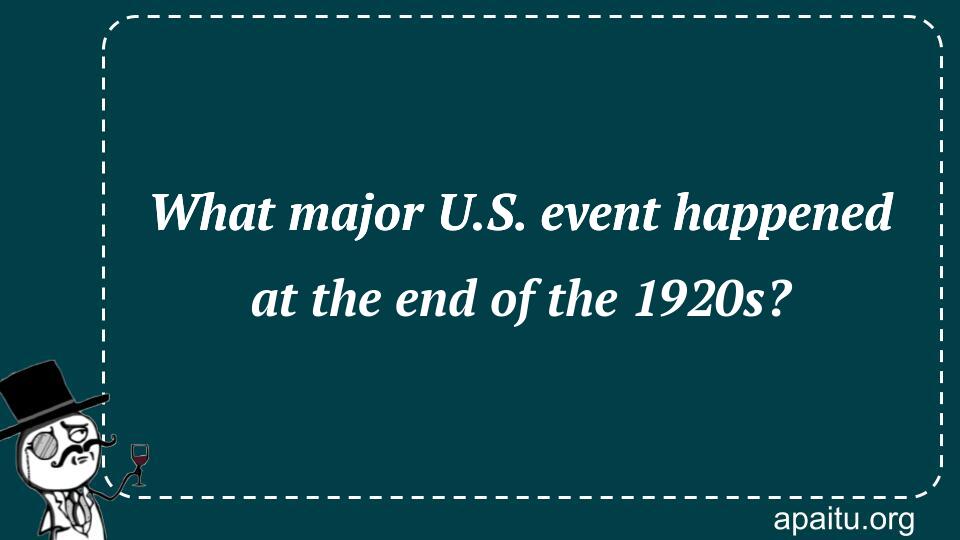Question
Here is the question : WHAT MAJOR U.S. EVENT HAPPENED AT THE END OF THE 1920S?
Option
Here is the option for the question :
- Wall Street Crash
- St. Louis World’s Fair
- The Great San Francisco earthquake
- Flight of the Wright Brothers
The Answer:
And, the answer for the the question is :
Explanation:
The disaster that occurred on the stock market on October 29, 1929, sometimes known as “Black Tuesday,” put an abrupt end to a brilliant decade for the United States. That one day resulted in the loss of billions of dollars, which wiped out investors and triggered the Great Depression, which would continue for the following ten years.

The Wall Street Crash, also known as the Stock Market Crash of 1929, marked a pivotal and devastating event at the end of the 1920s in the United States. This catastrophic event had far-reaching consequences, triggering the Great Depression and reshaping the economic landscape of the nation.
In the years leading up to the Wall Street Crash, the United States experienced a period of unprecedented economic growth and prosperity known as the Roaring Twenties. The stock market soared to new heights, and an atmosphere of optimism and speculation prevailed. However, beneath the surface of this apparent prosperity, underlying issues and imbalances were building up within the economy.
On October 24, 1929, the stock market experienced a sudden and dramatic decline. This event, known as Black Thursday, sent shockwaves throughout the financial world. Investors frantically sold their stocks, leading to a massive sell-off and a rapid decline in stock prices. The panic intensified on Black Tuesday, October 29, 1929, when the stock market experienced its most significant crash, resulting in a total collapse of stock values.
The Wall Street Crash had profound and devastating consequences for the American economy and society as a whole. The stock market crash wiped out billions of dollars in wealth, leading to a severe contraction in consumer spending and business investment. As a result, numerous businesses faced financial ruin, leading to widespread bankruptcies, layoffs, and unemployment.
The impact of the Wall Street Crash reverberated beyond the stock market. Banks and financial institutions, which had heavily invested in stocks, faced significant losses and began to fail. The banking crisis that ensued further exacerbated the economic downturn, as people rushed to withdraw their savings, causing a wave of bank runs and further destabilizing the financial system.
The consequences of the Wall Street Crash were not confined to the financial sector alone. The economic downturn triggered by the crash had a ripple effect on various industries, leading to a decline in production, trade, and international economic relations. Unemployment skyrocketed as businesses struggled to stay afloat, and families across the nation faced extreme hardship and poverty.
The Wall Street Crash marked the beginning of the Great Depression, a prolonged period of economic hardship and widespread poverty that lasted throughout the 1930s. The effects of the Depression were felt globally, as economies around the world were interconnected through trade and finance. The crash shattered the illusion of invincibility and exposed the vulnerabilities of an economy built on speculation and excessive borrowing.
In response to the crisis, the U.S. government implemented a series of measures to stabilize the economy and prevent future financial catastrophes. These initiatives included the establishment of regulatory bodies such as the Securities and Exchange Commissi